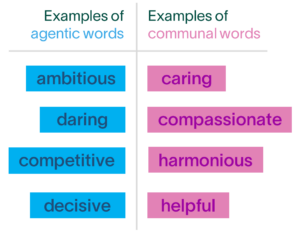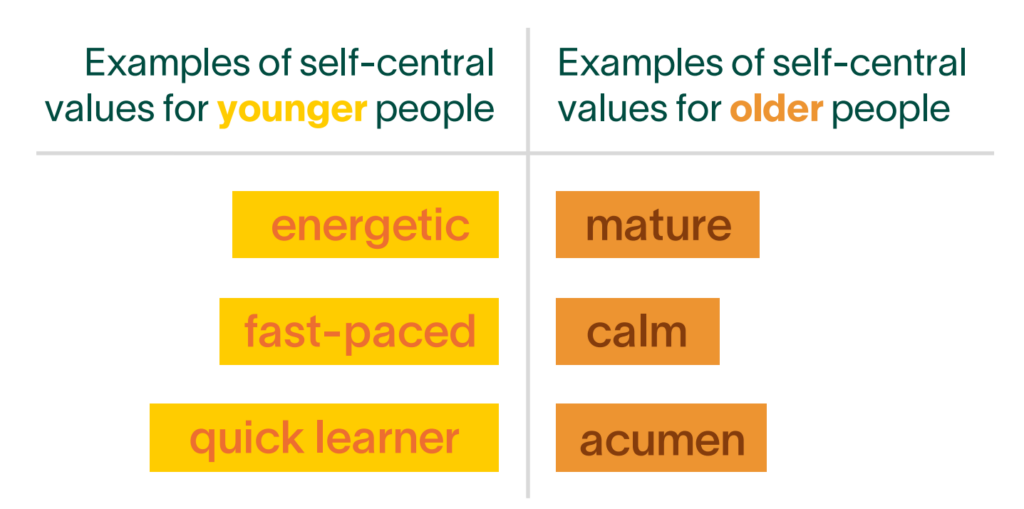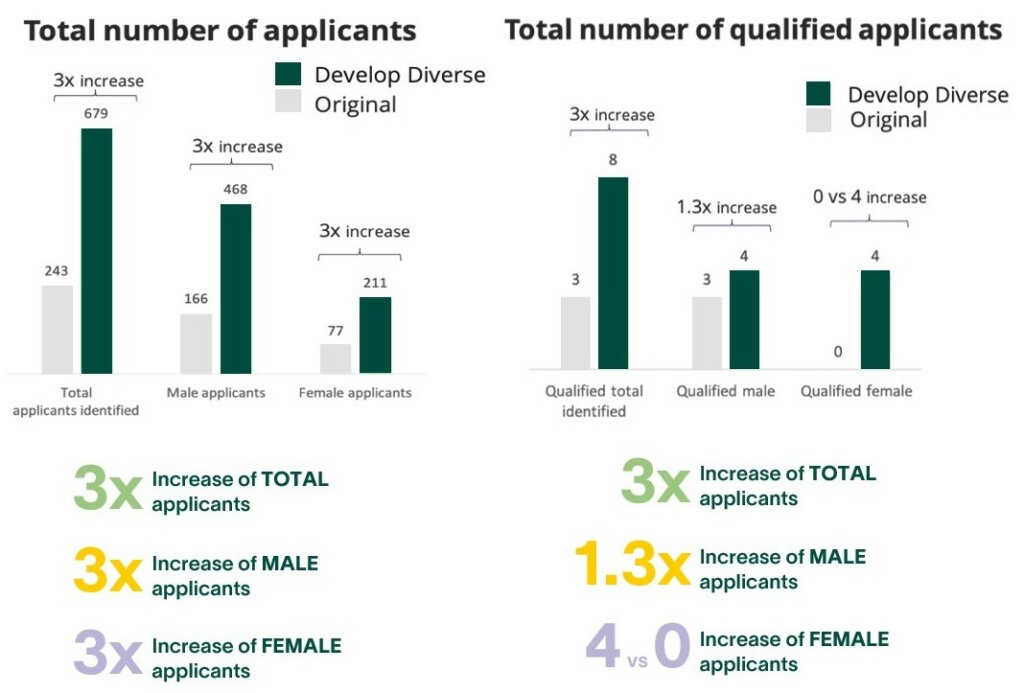Research Behind Develop Diverse
Our software is based on years of research into the impact of language on diversity and inclusion. Our team has reviewed and analysed numerous studies, and we’re confident that Develop Diverse is backed by sound, empirical evidence.
The agentic-communal model of advantage and disadvantage is the base of our solution. This model is critical when discussing inclusive language. Western societies value agentic traits more than communal values, which advantage demographics like men, white people, and younger professionals. In consequence, we associate them, and they self-identify with agentic traits. Women, marginalised ethnic groups, and older, neurodivergent or professionals with disabilities are disadvantaged. We associate them, and they self-identify with communal characteristics [1].

Studies have shown that gender affects people’s evaluation disparately, affecting their work performance [2], potential [3], and likeability [4, 5, 6]. The agentic wording in job ads discourages women from applying, while the communal language has some tendential effect on male applicants [7, 8].

We associate the agentic/communal language differently with people based on age. The communal traits are more associated with older people [8], while the agentic qualities are more associated with and self-central to younger people [9, 10, 11]. Researchers have also found evidence of that distinction cross-culturally [12]. Agentic language can also discourage neurodivergent applicants and people with disabilities [12].
Finally, using language to target marginalised candidates does not erase stereotypes nor spread inclusivity. Quite the opposite – it can reinforce social stereotypes about the position you are recruiting for [5, 6, 13, 14].
We continuously research and use validation techniques such as behavioural studies and country and language-specific word embedding methods. Through such means, we ensure that the language used in our software is inclusive and effective.
